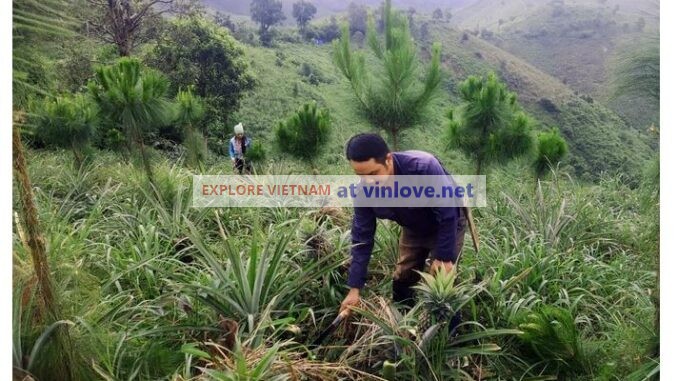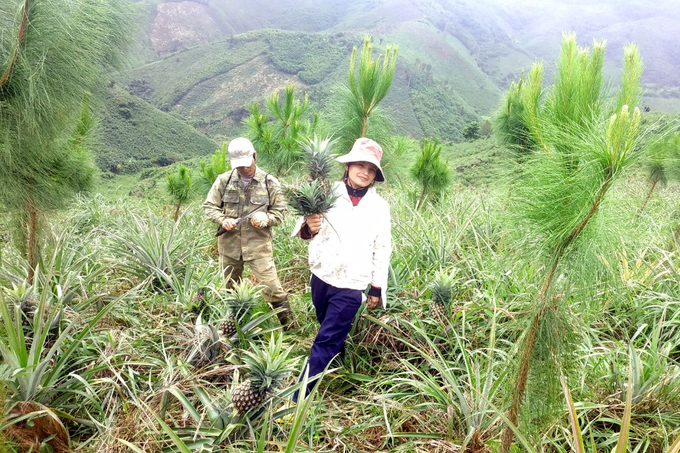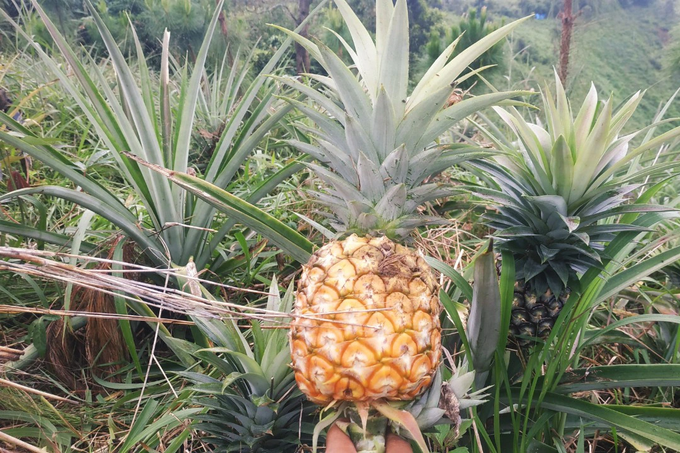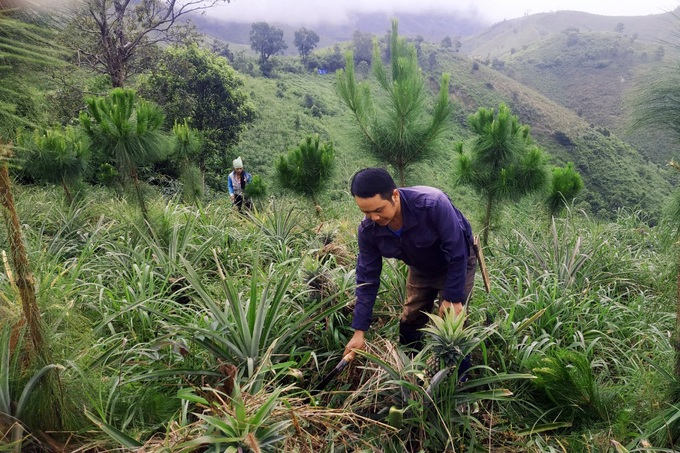
In the face of the mass death of forest trees and a very low survival rate when highland households intercrop with noodles, the authorities of Tu Mo Rong and Kon Tum districts have come up with a solution to help people “get short and grow long. ” effective.
The survival rate of trees is low because of intercropping forests
In recent years, the management, protection and development of forests have always been a concern by the authorities at all levels, people have also actively participated in afforestation, greening bare land and bare hills.
From 2021, in Tu Mo Rong district, Kon Tum has 7 communities with 250 households in 11 communes registered to plant forests on an area of nearly 250ha. Crops include pine needles and medlar…
The afforestation is expected to green the barren hills of forestry land. In addition, people participating in afforestation also benefit from the care and protection of forests.
However, afforestation has not yet brought about the expected effect because of the low survival rate of trees.

Mr. Duong Dang Khoa, Chairman of the People’s Committee of Dak Ha commune, said that the percentage of living forests in the area is only 40%. Through the review, many households have a survival rate of only 10%.
After 3-4 years, if the acceptance test fails to become a forest, people will be very disadvantaged because they do not receive money for forest environmental services and waste the previously supported budget.
According to Mr. Khoa, the areas registered for afforestation are usually the old swidden fields of local people. After that, the commune reviewed and mobilized people to plant forests together on forest land.
When implementing afforestation, people have intercropped with short-term agricultural crops. In the process of taking care, people use a lot of chemical fertilizers, pesticides, especially herbicides, causing forest trees to die.
For example, the households of Y Thi, Y Nga, and A Dai (Mo Pa village, Dak Ha commune) grow more than 1,000 medlar. However, after 2 years of care, the allocated trees were all dead or the survival rate was less than 10%.

Talking to Dan Tri reporter , Ms. Y Nga said: For a long time, her family has grown noodles and rice on an area of about 1.3 hectares. In 2021, the government mobilized the family to plant more than 1,000 medlar trees on this area. The family also intercropped medlar with noodles. However, intercropping of cassava and medlar causes medlar to die.
Y Nga’s family also wants to plant forests according to the instructions of the commune. However, if only afforestation is done, the family will not be able to harvest early enough to support their 3 young children who are of school age.
Therefore, the family intercropped cassava and other short-term crops on forest land. This leads to the fact that forest trees will not grow as well as individual households.
Help people “take short to feed long” effectively
Facing the low survival rate of forest trees, Tu Mo Rong District People’s Committee directed the communes to re-evaluate the effectiveness of planted forests in 2021. Thereby, develop a plan to guide people to replant the forest areas. planted with low survival rate, not yet ensure density according to design documents.
At the same time, the district mobilized organizations, individuals and businesses in the area to support funds and seedlings to coordinate with people to plant and take care of them.
According to Chairman of the People’s Committee of Dak Ha commune, earlier this year, the commune also mobilized all socialization resources to help people replant dead forest trees.
In order to avoid the tree dying like in previous years, the commune always checks and monitors the reforestation; instructing people on how to fertilize and protect fences; implement measures to prevent fire, fire, pests and diseases.
In order to take care of people with food to maintain their lives and develop the economy on the planted forest area, the commune instructs people to grow ginseng and pineapple under the forest canopy, as well as how to create goods and harvest to avoid affecting the trees. forest.

One of the people who practice intercropping with forest trees is Mr. Vi Van Chom, Head of Ty Tu village, Dak Ha commune, Tu Mo Rong district.
Mr. Chom has received more than 1,000 pine trees to plant on an area of 1ha of forest land that his family had previously cultivated. Taking advantage of the pine forest canopy, Mr. Chom continues to intercrop pineapple trees.
Over the past 2 years, thousands of pine trees have grown lush, the survival rate is over 70%. Just entered the divination season, but the pineapple garden under Mr. Chom’s pine canopy has collected more than 50 million VND.

Mr. A Chom said: “When I received the pine variety, I planted it on the swiss land that my family had been cultivating for a long time. I also took advantage of the empty land under the pine forest to intercrop more pineapples, while helping the plantation avoid the forest. grass grows and additional costs of maintaining life and raising a family”.
Mr. Vo Trung Manh, Chairman of the People’s Committee of Tu Mo Rong district, Kon Tum province said that the low survival rate of forest trees is also due to many reasons such as: Ineffective care and protection of the people; The high investment costs for afforestation and the long harvesting time make people not interested. In many difficult areas, people intercropped with agricultural crops, causing forest trees to die off.
Faced with the above reasons, the district has established many fact-checking teams and come up with appropriate solutions to improve the efficiency of afforestation and greening of bare hills.
Since then, the locality has guided people to deploy effective intercropping models under the forest canopy, helping people both benefit from the trees under the forest canopy and have money for forest environmental services
Photo: Internet (Vinlove.net)
